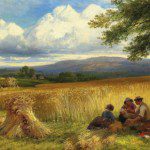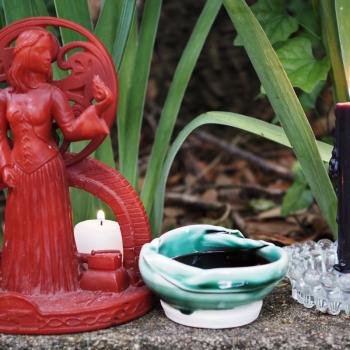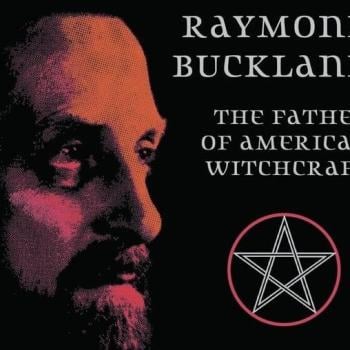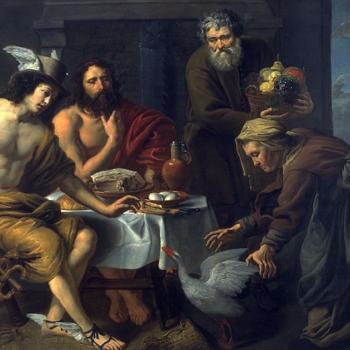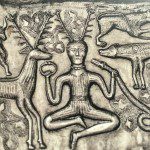 Sable Aradia is both a friend and a peer; she blogs here at Patheos Pagan and at Pagan Square (just like me!). When she asked if any of us here at PP would be interested in reviewing her book The Witch’s Eight Paths of Power I signed right up. I warned her that if I didn’t like her book I’d be critical but she was confident in her work and rightly so. I loved the book and found it be a unique and daring take on advanced Witchcraft.
Sable Aradia is both a friend and a peer; she blogs here at Patheos Pagan and at Pagan Square (just like me!). When she asked if any of us here at PP would be interested in reviewing her book The Witch’s Eight Paths of Power I signed right up. I warned her that if I didn’t like her book I’d be critical but she was confident in her work and rightly so. I loved the book and found it be a unique and daring take on advanced Witchcraft.
Other Editions of 20 Questions: Lon Milo DuQuette, Aquarian Tabernacle Church, Peter Carroll, and Gary Lachman.
Jason: So what led you to write The Witch’s Eight Paths of Power and how did it all come about?
Sable: I was designing workshops for my Wiccan church organization and I was considering the process of magick. Not how one does a particular spell, but what makes magick work exactly, and how can one practice the skills to be better at doing it? Then I was reading through the Gardnerian Book of Shadows and I considered the Eightfold Way. It struck me that not only was this format the answer; it was an excellent framework for the workshops. I started considering how the traditional material of witchcraft would fit within that structure. And the rest of it unfolded over a few years of work, writing, experiment and practice. I considered that when I was looking to take my practice to the next level and go beyond the basics, there was very little out there in the world of Pagan publishing in that vein (though there is a lot more now.) I would have liked something experiential and practical. So I guess in many ways, I wrote the book I wanted to read.
I was amazed at just how much information was in this book, what was the process of laying out the chapters and deciding where to put what?
That pretty much was the process, actually. I laid out my chapter headings and considered them in my work and my practice. When I thought of something I believed would be valuable to include I wrote about it and I decided which chapter heading it would go under. I did move a few things around – for instance, I struggled with whether channeling should be part of Trance or The Great Rite – but for the most part, it stayed where I’d put it initially. I shifted things around within the chapters as different ideas came to me. When I felt I had all the necessary material, I wrote some connecting text to make it flow together (though I needed very little of that, actually; I often find one exercise is a natural extension of another). Then, of course, I deleted the stuff that was essentially repeated and I thought of simpler ways to say things. The original manuscript was 120,000 words; I was asked to bring it down to 70,000 words and I made 80,000, which the publisher accepted.
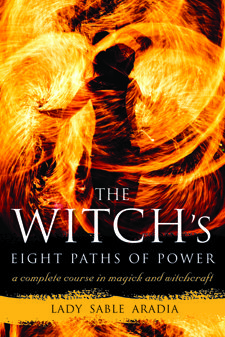 You mention being a part of the Star Sapphire tradition in the book? Can you tell us a little bit about your tradition?
You mention being a part of the Star Sapphire tradition in the book? Can you tell us a little bit about your tradition?
We were founded in the Vancouver area about 25 or 30 years ago by a bunch of interesting oddballs, really. They were Gardnerian and Alexandrian initiates who had Gerald Gardner’s gung-ho attitude about using what worked, and probably because of the area they were in, their practice had also been influenced by Reclaiming, and its Feri and feminist witchcraft roots. By happenstance a disproportionate number of the founders were also martial arts enthusiasts (you know the guy who was twirling salamis around in the second Teenage Mutant Ninja Turtles movie from the 80s? That was one of ours. Seriously.) Another one of our founders was a career carny. There was also a link to Sybil Leek and a BC interior fam trad too. There was also a resurgence of interest in ritual magick in the community at that time because Donald Michael Kraig’s classic book “Modern Magick” had just come out. So basically, I think they set out to combine the best of all worlds. They drew upon British Traditional practice and theology, and as Chris Orapello from the Down at the Crossroads podcast so aptly put it when he asked the same question, introduced eclectic elements on purpose. They developed a practice and theology that was consistent to the tradition and added in the stuff they liked, and that worked, from other sources.
When I met a couple who were members of the Star Sapphire tradition through my work with a Wiccan public church group, my partner and I thought that their tradition was a natural fit for us because our own backgrounds contained many of those elements; and the tradition we were practicing in, Pagans for Peace (founded by Sam Wagar) was almost a foil of Star Sapphire; developed in the same area and derived from Reclaiming sources with deliberate incorporation of BTW elements. Because we were already third degree initiates in Pagans for Peace, our training with them was organic, and I was initiated as a High Priestess in the Star Sapphire at Mabon of 2006. I wrote about that in my book. Lady Dolphinie initiated my partner (now husband) near Beltane of the following year.
There were a lot of things that surprised me in the book, the first was just how raw and open you were with your entire life. What led you to include so many personal interludes?
That’s a neat question. I suppose it comes from my teaching style. I like to offer personal examples because I think it makes what I’m teaching clearer and more relatable. Also, some people just learn best that way. I think it’s important to be willing to be vulnerable because it gives others permission to do the same. And as I’m sure you know, working with the Craft means that you must go inward, you must do your shadow-work, and you must face off against your unconscious assumptions and your ego. If I am not willing to do that, how can I ask others to do it?
Do you have fears that you might have been a bit too open?
Do you think I was? I suppose that’s possible; sometimes little nuances of social appropriateness that seem obvious to everyone else mystify me. But a person who is honest and open about who she is has nothing to fear from public opinion. My secrets can’t be exposed if I have none. I have learned that popularity waxes and wanes but who I am remains the same. What you think of me is none of my business.
There are over 120 exercises in the book, did you (and/or your partner) actually do all of them in the process of writing Eight Paths of Power?
I confess; I did not do the group version of the Rite of the Pentacle. I wanted to but did not have the opportunity, though I hope to remedy that in the future. And I have probably done all the different tool consecration methods at least once, but not necessarily together. Otherwise, yes. And I tend to do them when I’m teaching them as well (though for obvious reasons, my sex magick classes are usually mostly theory.) In this way, I can practice the skills and I learn more about the process every time.
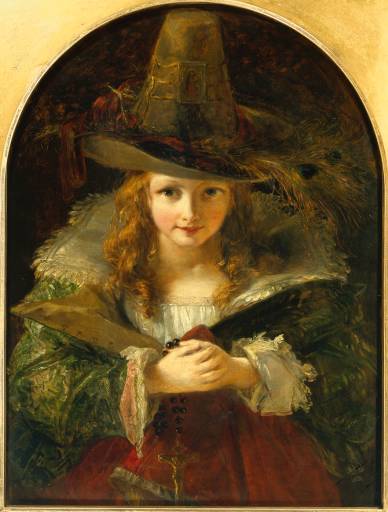 There were moments in the book when I felt like you were taking an “everything and the kitchen sink” approach (especially with the yoga). There was just so much information from so many varied sources, how do you get it to all blend together?
There were moments in the book when I felt like you were taking an “everything and the kitchen sink” approach (especially with the yoga). There was just so much information from so many varied sources, how do you get it to all blend together?
You know, I guess I just don’t see a disparity! Ultimately it all comes down to methods of changing consciousness and directing energy. Yoga knows how to do that. Reiki knows how to do that. Tantra knows how to do that. How are they different from witchcraft? Semantics and language mostly, I think.
This is one of the prettiest books I’ve seen published in quite some time, there’s no skimping on the pictures, charts, and diagrams. Did you do all the little drawings of altar layouts and Wiccan symbols?
Thank you very much! Yes I did.
There’s a lot of “visual” in the book, photographs of yoga poses and dance steps and as someone who can’t dance I appreciated that. (I screw up things as simple as a vine step consistently.) My question about it though is kind of goofy, who took the photos and did you ever feel silly posing for them? The idea of me striking a yoga pose and sharing it with the world is the stuff of personal nightmares.
Ha ha! Oh, you are so right! Looking at the pictures afterwards I see all the little physical imperfections that I have and want to cover them up, of course. But I couldn’t think of a better way to demonstrate them in a book format than with photos (I often find drawn diagrams confusing and misleading myself). And I decided no one cares whether or not I have belly bulge or bad hair days; they’re just trying to learn the step or the asana. (Probably you didn’t even notice until I mentioned it, right?) I suppose practicing skyclad teaches you that cavalier attitude about your body; everyone has imperfections they don’t want the world to see, so why are yours so different?
To answer the first question, however, the photographers were both well-known to me and had seen me naked before. 😉 One of them was Lady Rowean, who was my coven Maiden for the longest time and my live-in sister-in-spirit (now she runs her own coven in Prince George, Northern BC). The other was Lord Redleaf, who is now one of my two life-partners. I think they did a great job!
There’s a lot of content in the book that I’d categorize as “brave.” You simply went into places that most Pagan authors fear to tread. Was that intentional, or more just a reflection of your own personal practice?
Hmm. Good question. I would like to think that’s part of my personal practice, because one of the elements I value in my own self-image is courage. But I’m not sure if that’s me patting myself on the back or not, and I know there were things that I had a lot of fear around that I consciously chose to do (like the hallucinogens, for example.) If you’re asking if I included all of that for shock value; I didn’t.
I love how in your chapter on Intoxicants there were sixteen pages of information before getting to the substances (alcohol, marijuana) most people actively think of as intoxicants. Were you consciously hoping to get people to think about basic things like incense in new (and more powerful) ways?
Yes and no. I decided when I laid out the chapters that the use of any external substance to change consciousness fell under the category of Intoxicants. The only place to put incense, herbalism and smudging was there. But that’s actually a good illustration of the thought processes involved in the writing of the book. I asked myself, why are these things such a significant element in the practice of witchcraft? Are they fun embellishments in magick, or do we include them for logical reasons? Doing the research on the science behind Trance and the levels of consciousness proved to be a revelation for me and tied much of the work of the book together. It became a matter of experiment. Herbs, essential oils, sage and incense do specific things to alter our consciousness, and they accomplish specific magickal purposes as a result. So when I realized the powerful ways in which such things affect our consciousness and thus our practice, I wanted others to realize it too.
It feels like over the last twenty years people have become more and more hesitant to write about things like intoxicants and even sex in Pagan books. Have we entered an era where it’s OK to talk about those things again or are you trying to push the boundaries?
The short answer is that I guess I will find out! The long answer is that I hope the time has come when it’s okay to talk about these things again. And I really think we need to because they have historically been a part of magickal practice long before modern Wicca existed and will continue to be long after we’re gone, because they are part of the human experience. But I recognize that I’m blazing a trail and I’ve already been taken to task for it more than once.
A Raise the Horns Review of The Witches Eight Paths of Power
It’s mentioned a few times in the interview but I legitimately loved this book. It’s not a Wicca 101 book, it’s the rare “advanced” book that’s actually advanced. There’s a whole lot of information in here rarely (if ever) covered by other sources. If you are looking for “new” and “different” this is the book. I’m not a “be all end all” expert on Witchcraft, but it’s rare when I feel as I’m actually learning something. I learned things in this book.
Is it perfect? Not quite. As I mention in the interview I think it suffers a bit from “everything and the kitchen sink” syndrome, but in years to come I’ll just ignore the stuff I don’t care for (I’m not a huge fan of reiki) and focus on the stuff that’s applicable to my own journey. There’s also a lot of exclamation points scattered throughout the text. It is possible to be little bit too excited. All of those quibbles aside this is a book worth owning.
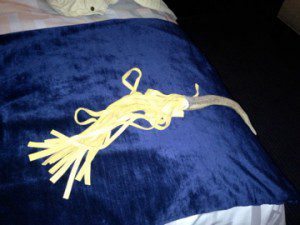 There’s a heady blend of British Traditional Witchcraft alongside techniques from Anderson Feri and the Reclaiming Tradition. I wouldn’t say it made my head spin but it was to see the scourge share a book with the Iron Pentacle. Is the future of North American Witchcraft going to be a synthesis of traditions?
There’s a heady blend of British Traditional Witchcraft alongside techniques from Anderson Feri and the Reclaiming Tradition. I wouldn’t say it made my head spin but it was to see the scourge share a book with the Iron Pentacle. Is the future of North American Witchcraft going to be a synthesis of traditions?
Good question! I expect that it might. Most of us come to the Craft nowadays by reading books and practicing solitary and engaging a great deal of personal gnosis before we connect with others who share similar views, and rarely is that as formal as coven practice. We’re the exception, Jason. But I don’t believe in the “great unbroken perfectly-preserved Craft” myth anyway. I think that’s the way it’s always been. I think that’s the way faith has always been, really.
Before you take that as me being a confirmed eclectic, I will say that I believe that solid training in a consistent practice and system should be foundational, whatever that practice and system might be. Understand that this mixture is my system. Only when you know what a system actually is can you consciously choose whether or not you agree or disagree. Every organism needs a nucleus with the DNA to tell them how to divide and change. We can then choose to activate or deactivate whatever alleles we wish to. Some will be more successful than others. Thus we grow and evolve.
Speaking of the scourge . . . . . I wasn’t shocked to see it in the book considering I know the Eight Paths of Power, but I was a bit taken aback to see it lead off a chapter (but completely in a good way!). It almost feels like the scourge has become a forgotten tool, or at least one people are uncomfortable writing about. Is it a tool you use in your personal practice?
The Star Sapphire has an awkward relationship with the scourge. Some of us believe in it and some of us don’t. For us, it’s a valid option but not a requirement. So it’s not a standard part of our rituals, as it is with Gardnerian practice. But yes, I do use it in my practice. Generally it’s a conscious choice for specific rituals. And I personally strongly believe in its value. As I explain in many places in the book, pain is a perfectly legitimate way of changing consciousness and it can be effective in many ways that other practices have to work much harder to achieve. Because of the design of the scourge it’s a safe and harmless way to incorporate the consciousness-changing elements of pain, blood flow and rhythm, without leaving lasting damage. Some of the most intense mystical experiences I have had in my life come from the use of the scourge. I encourage practitioners to experiment with it.
You write about male masturbation in the book . . . . . where did that information come from? (I did not intentionally write that as a pun, swear.) I certainly understood where you were coming from but it did make my eyes bugger out a little bit.
That’s a fair question. Two sources, really. One of my reference sources, and probably my primary print resource for the section on sex magick, was Donald Michael Kraig’s excellent book “Modern Sex Magick”; he writes about some of the exercises I included so I was reminded to include them. But since I have dabbled in Tantric practice I have also participated in, shall I say, facilitating the exercises? And some I relayed second-hand from my priests and partners.
As we get closer to the end my questions are probably going to get a bit more critical, but I want to say right now that I really loved the book. It’s something I’ll recommend in the coming years and after reading it I actually used it to look something up, and was disappointed to see the book doesn’t contain an index. So much information and yet I found it sort of hard to find after the fact. I’m sure that’s a publisher thing, but any chance that might get corrected/added to in a future edition?
I’ll be honest; I really struggled to meet the word count requirements of my publisher. So the decision not to include an index was due to the heavy word count. A fact about the publishing world; every page costs the publisher money to print. So if the book has too many pages, it becomes too expensive and people won’t buy it. As a first-time author I think that Weiser wisely felt (pun intended) that asking for more than $20 would have been risky at best. I imagine that if it sells well, there will be more editions; and if so, I will point to this column and ask for permission to include an index, despite the extra page requirements. But do keep in mind; the book will likely cost more.
I am very flattered that you were already referencing the book, Jason. That tells me a lot. Thank you.
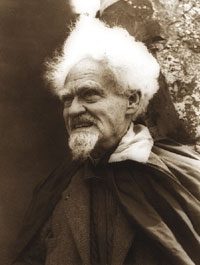 You mention Gardner a lot in the book, what are your personal feelings about the Grand Old Man of Witchcraft?
You mention Gardner a lot in the book, what are your personal feelings about the Grand Old Man of Witchcraft?
I like him! I made a point of reading his work in order to get a feel for what I thought of it and who I thought he was.
Briefly, my own opinion of the major criticisms leveled against him: I don’t think he realized that he was creating Wicca. The genuine opinion of the anthropologists of the day was that witchcraft was a Pagan mystery cult that had survived in secret through the centuries. The fact that modern scholarship has essentially disproven that is incidental to his personal intention. I do think he had some ego problems; and I have come to accept that this is an occupational hazard of the point of study that we would now associate with the second degree and shadow-work. I also think he was a man on a mission with the intention of sharing what he believed to be a novel philosophy of freedom and love with the world; and obviously he was successful.
He probably was a little kinky; I don’t see this as a character flaw. I think sometimes his desire to believe the best in people led to poor judgment. I have this same character flaw so what can I say? He is often accused of being sexist, heterosexist and a gender-essentialist; to this I say: cut the man a break; he was writing in the 50s and he was not a young man then. Plus his practice was probably highly influenced by tantric practice and Eastern mysticism, and they are very gender-essentialist. People forget that when he started doing things, there was NO widely-practiced religion that acknowledged a divine image other than “God the Father.” Taken in the time period, Jesus (if he existed historically) was a hippie beatnik and Mohammed was a feminist. People forget this.
That being said, I imagine Gardner probably would have ticked me off royally if I had been practicing in his coven too, and I probably would have stormed off and left. But that doesn’t mean that I don’t respect him greatly. We should not expect our teachers to be gurus. None of us are perfect. If we weren’t a little weird, we wouldn’t be practicing this path in the first place; and statistically we have more neuroses, more traumas, and more education than most of the population. Being imperfect does not invalidate any of the gifts we have to offer.
I have to say as an initiated Gardnerian seeing someone quote from “Gerald Gardner’s Book of Shadows*” kind of bothered me. Do you expect any blowback from that?
I guess I’ll find out! One of my dear friends who is a Gardnerian priestess is reading the book right now. But listen; the horse is out of the barn already and I think barring the door now is pointless. Lady Sheba published a version of the Gardnerian Book of Shadows in 1970, and Aiden Kelly has compiled two full versions online for anyone to read at http://www.sacred-texts.com. Don’t you want the world to know what was actually in it rather than offering wild conjecture, since it’s already out there?
Was quoting it ever a stumbling block or issue for you?
No. For me, “revealing secrets of the Craft only to a proper person, “properly prepared,” means not teaching people things they’re not ready for and making sure that their understanding and my ethics are aligned. Not quoting the text of an already publicly-available document seems silly.
20. Last question . . . . a bit on alcohol in ritual and you didn’t consult me!? I feel like you missed out on a great 300 word bit on Dionysian Ritual.
Ha ha! I know you’re just teasing, but I probably would have if I’d known you better then . . . but never fear, there’s probably a whole book in each of the Eight Paths eventually (remember, I’ve already cut 40,000 words of material) and so I will probably come and participate in one of your Dionysian rituals for the experience; and if you want to share your information and skills with me when I do, I will be sure to credit my source. 😉
I really did enjoy Sable’s book and think that if you are looking for the elusive “second level” book this is the one you should pick up. Thanks so much to Sable Aradia for answering my questions.
*As a Gardnerian myself I honestly don’t believe any of the “books” online claiming to be Gerald Gardner’s Book of Shadows is an actual BoS of Gardner.



